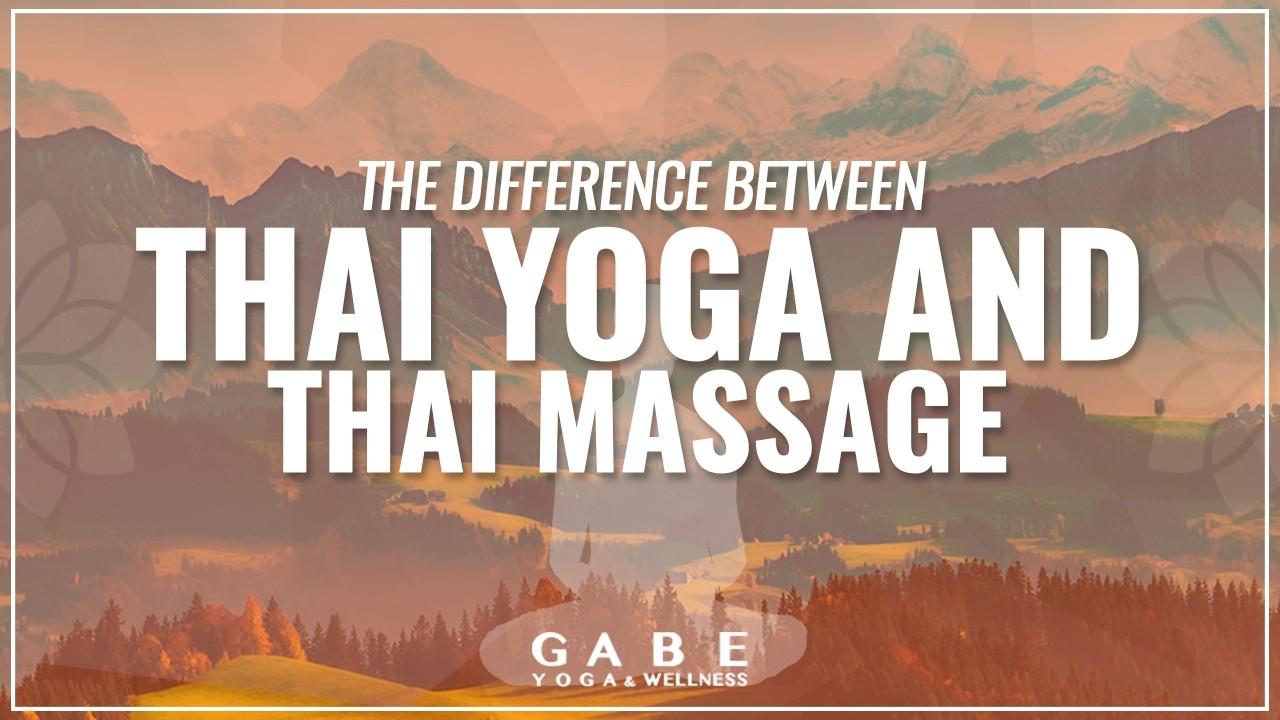
The Difference Between Thai Yoga and Thai Massage
Jan 31, 2018Today Thai Massage is as popular as Yoga.
Ok, maybe not that popular. Though in comparison to when I opened my first Thai Massage and Yoga center in Scottsdale, AZ, Thai Massage is almost a house hold word.
Back in 2008 it was still shrouded in mystery.
Between stories of sex behind curtain, or some idea of happy ending for western men, Thai Massage has had to fight its way to respect.
Great strides were done with Acro Yoga using Thai Massage principles in their trainings.
But what is Thai Massage and why am I writing a blog post that juxtaposes Thai Massage with Thai Yoga?
Most people will tell you that Thai Massage is 'Yoga for the Lazy person.' Meaning, Thai Massage, which is performed with the client being fully dressed, while the giver stretches and presses on their client. Leading to a feeling of being taken through Yoga class, just without your effort.
This simple image is why Thai Massage is taught in 3-5 day courses all over Thailand.
Judgment on whether this is an effective process to make qualified providers aside, Thai Massage is based on a sequence designed years ago.
The sequence, or dance as it is referred to in some circles, has a yoga sequence feel to it.
When I first went to Thailand in 2005 to study with Master Pichest Boonthume, I thought I was going to learn the dance, and then come home and have better skills at adjusting my yoga students, and offer private clothes experiences for happiness.
When Pichest started praying for an hour, I was not sure if I was in the right place.
When he turned around and asked :'what does a yogi do?' I knew I was in for a shock of a week.
Pichest answered his own question: 'A Yogi sits! A Yogi feels!'
These words would become the essence of what I would eventually understand is the biggest difference between Thai Massage and Thai Yoga.
It takes years of receiving and giving that one learns how to 'feel.' To feel how far the skin, muscle and ultimately tension and ligament takes practice, and someone directing your attention to what is the effect of the stretch, movement or pressure.
Pichest started teaching out of his garage in 2002, after learning that the way he has been moving was noneffective in healing his body.
In fact, years of giving Thai Massage let his body hurt to such a degree that he could not sleep lying down, and had to use a cane for walking.
At the insight of an elderly lady in his temple, Pichest began to look inward at how each movement affected his body, and thus also learning how each move in the dance affects the health and energy of his clients.
He started teaching a new approach to the dance.
How to move in such a way that it would be beneficial to the giver as well as the receiver.
Often you can hear him call out in a room, with affection and joy, 'terrible!' Referring to a student moving in a way that was in efficient.
Pichest's approach to the dance is Thai Yoga. A connection between the giver's attention to how they are moving in relation to the receiver. It is this relationship between giver and receiver that is a Yoga experience, helping heal the body, concentrate the mind, and clear the heart so that both experience what is called in Yoga 'samadhi.'
By 2005 he was not teaching the steps of the dance any more, trusting that those who show up at his home already know his adaptation to the traditional Northern style Thai Massage,
His biggest message then, and now, is 'know the sequence, but then forget the sequence!'
To "forget" the sequence requires deep understanding of how the sequence affects the body.
The dance of the sequence is what I call 'Thai Yoga.' A step by step practice that increase freedom in both participants. Yoga for 2 people.
So what is Thai Massage?
Thai Massage is the application of the dance to the unique needs of the individual.
Where Thai Yoga is a dance, Thai Massage applies the principles of the dance, yet does not follow a meditative route. It is an investigative approach to removing pain, tension, or discomfort from the body.
Thai Massage means that certain steps from the dance will be dropped, modified, or turned around in order completely.
Thai Massage is unpredictable, and requires the feedback of the receiver, thus the breath connection of Thai Yoga is not maintained so that the giver can ask for questions. Questions such as: 'where is the pain?' or 'can you feel the difference between the texture in one spot compared to another as I press?'
I have seen Pichest help relieve pain from clients in a matter of minutes.
The client did not come for an hour of some idea of relaxation. To have their feet, legs, hand and body pressed and stretched, in hopes that their pain will go away,
The client did not come with an expectation of time.
The client came with a hope of relief.
Pichest ultimately teaches that the dance is a meditation. The more meditative the giver becomes, then it is the skills gained by dancing efficiently that reveal how to give Thai Massage.
For over 10 years I have returned regularly to Thailand to be in the meditative experience that surrounds Pichest.
While I continue to learn how to help bring joy to the body with Thai Massage, it is Pichest reminder to his students every Monday morning: 'What does a Yogi do? A Yogi sits, and a Yogi Feels!' that has captivated my spirit and burned the flame of sharing 'Thai Yoga.'

